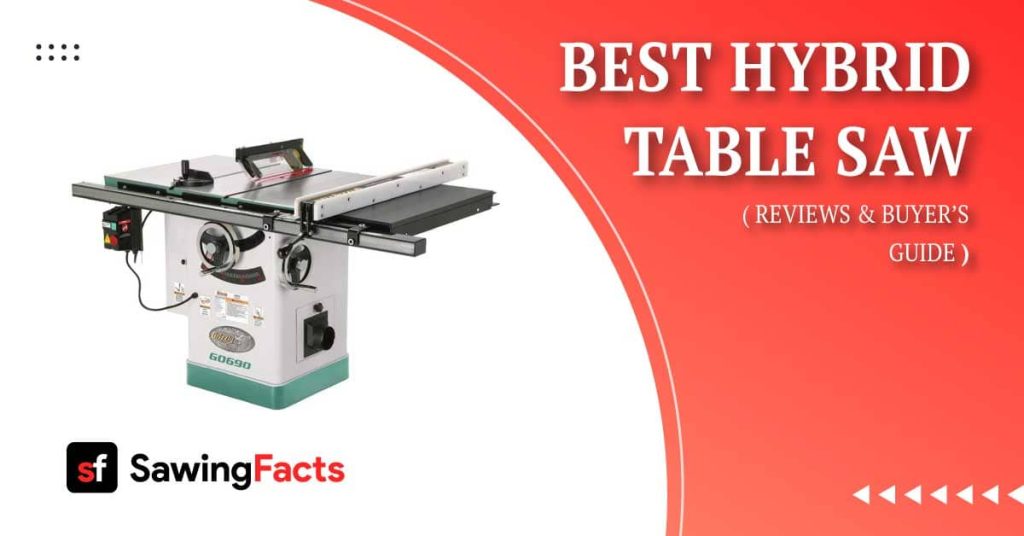When it comes to making objects using the wood majority of the people prefer on reliance with professionals over self-making. Nevertheless, with the emergence of Do It Yourself (DIY), and an innumerable amount of YouTube tutorials, it is possible to make any objects with it. Below is a literate illustration of how to properly create a table saw using nothing but wood.
Table of Contents
Understanding Different Types of Jig
The proper conception of jig is creating a fence for all types of cuts in your wood. The biggest criterion involves all the cuts having a similar level of width. The first jig involves shredding strips down. Once the first objective is achieved, the second one involves a conventional cross cut sled. The final type includes a sled that cuts the wood in perfect half.
Knowing the Importance of Each Jig
Contemplating the significance of each type is fundamental. The first category: ripping thin shreds off can be messy work if not done with precision. The margin of error is finer due to the fence getting razor close to the blade. Having a proper machine that allows your hands and fence go considerably off the blade, ensures the perfect combination of excellence and safety. While measurement is hardly a factor to be stressed out having a width of even digit is recommendable. However human hands rarely achieve sublimity on autopilot. If that materializes, using wood glue can solve in areas where it gets too chewed up.
A Refining Cross-cut Sled
A table saw jig consists of two cuts: ripping and cross-cut. The latter involves cutting horizontally. While the first method is difficult to attain apex result, the second is ruffian to even implement. Something treacherous in implementing cross-cut is that when the board is longer than wider, humans’ ability to grip and position the board creates disparity. It can cause the wood to be askew. Therefore what is the remedy to such a problem? The simple answer is using the fence. By using it you are allowing the tool to keep the wood static, only using the sled to cut the middle into precision. A cross-cut sled allows you much greater measurements and having two runners allows for a perfect middle cut. What having a double runner also does is it makes the wood spotless. Use props on the table saw with glue at the top of the runner. This method allows tilting the wood together and letting the machine do the talking.
Setting Up the Right Cross-cuts
When making a cut it is essential to know the difference between your work piece and your cut-off piece. Lastly one needs to understand which piece one needs to support. Workpiece is defined as the part of the board you have measured, and that is the aspect that needs utmost assistance. When using crosscut with miter gauge the off-cut wood, aka the unsupported side halts moving through the blade, resulting in unclear cuts. Using a stock block on the rip fence allows making small cuts with suavity. Hence having a crosscut sled has more merits than demerits.
45 Degree Is of Equal Priority as 90 Degree Cut
The final category of jig involves Miters Cut sled. For simplification, miters are defined as a 45 meter cut. Miter saw sled allows you perfect result, but it stands nowhere in comparison with it being a compliment of keeping it on a table saw. The process is similar to that of cross-cut sleds. Firstly one needs a base and few runners. This process allows continuous and multiple cutting. In order to make the runners keeping wood is essential. While majority uses hardwood, plywood can also be implemented. Overall, the choice of woods will bear no change in accuracy. What plywood offer is a subtle advantage for wider woods as it allows the woods to keep flatter for longer durations.
The Next Job Is Fencing
Knowing the types is a basic norm. Application of wood is the most critical process to make fencing specially for the miters one needs couple of chunks of ply glued together. Cutting it halfway through and using geometrical tools to measure the accurate 45 degree is the next process. Always focus on lining from the blade rather than the teeth. The following procedure involves connecting the fence to the curved line. This allows you drill and cut at the utmost angle.
Set-up the Table Saw
Like any machine the table saw jig has its benefits that elevate wood cutting into a whole new dimension. However, any technology without efficient human usage is a dosage for disaster. There are tricks that people do it completely wrong. Even professionals are guilty for implementing such bad habits. One of the major mistakes people make is pressing against the blade. When using your rip fence to cut the wide board your work piece will always be positioned between the blade and the fence. It can be tempting to guide the sheet from the cut off side but once the cut is made the fundamental error of putting lateral pressure on the saw blade instead of the fence. This can cause the board to bind and lead to cuts that are not squared. The thing that needs to be implemented is to support the work piece and keep the pressure against the fence not the blade.
Provide Three Directions of Pressure
The importance of pushing wood through the table saw is understated and basic using anything but fingers. Every table saw has to push sticks. But to do it flawlessly you need one to push the lumber forward through the blade and the other to keep it pressing downwards and against the fence. For safety and effectiveness, there are three directions of pressure you need to provide right push forward inward and upward.
With all the solutions available humans, you need just patience and willingness to create a smooth cut from your table saw jig.

